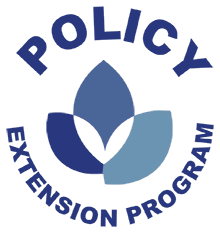The Safe Drinking Water Act (SDWA) is a federal law that ensures the quality of Americans’ drinking water. By regulating the public drinking water supply, public health is also protected. The standards of drinking water quality are set by the USEPA to oversee the states, localities, and water suppliers who implement those standards. These standards are used to regulate both naturally occurring and man-‐made contaminants that may be found in drinking water. All public water systems should be monitored regularly and comply with all regulations associated with drinking water quality.
Important Items
Public water systems: All public water systems must have at least 15 service connections or serve at least 25 people per day for 60 days a year. Public water systems are categorized as community water systems and non-‐community water systems depending upon whether or not the people are served by the system year-‐round or not. In addition, there are two types of non-‐community water systems depending on whether or not the system serves the
same people or not throughout the year: non-‐transient non-‐community water system (serves the same people) and transient non-‐community water system (serves the public but not the same individuals).
Sources of contaminants: Contaminants which might impact public health include improperly disposed of chemicals, animal wastes, pesticides, human wastes, wastes injected deep underground, and naturally occurring substances. Under the SDWA, six groups of water contaminants which may adversely impact public health and are regulated by the federal drinking water standards: microorganisms, disinfectant, disinfection byproducts, inorganic chemicals, organic chemical, and radionuclides.
Impacts to public health: Drinking water is directly associated with human health due to daily intake. The impacts of poor drinking water can include acute effects or chronic effects on human health. Any contaminants should be carefully regulated to ensure the quality of drinking water is safe.
Drinking water standards: Drinking water standards are set by the USEPA by first identifying contaminants that may adversely affect public health and occur in drinking water frequently and at levels that pose a threat to public health. A maximum contaminant level will be set by the USEPA to specify the maximum permissible level of a contaminant in drinking water. These levels are enforceable standards, and are set based on the feasibility to manage the contaminants under the set levels.
Best Management Practices: BMPs are the most effective, practical means of preventing or reducing pollution from nonpoint sources. Water quality monitoring: All water systems should be monitored regularly to ensure the water provided is safe. Each individual water system should submit samples of their water for laboratory testing.
Public Information: All USEPA reports and databases associated with drinking water are open access and the USEPA encourages public involvement in protecting drinking water quality.

